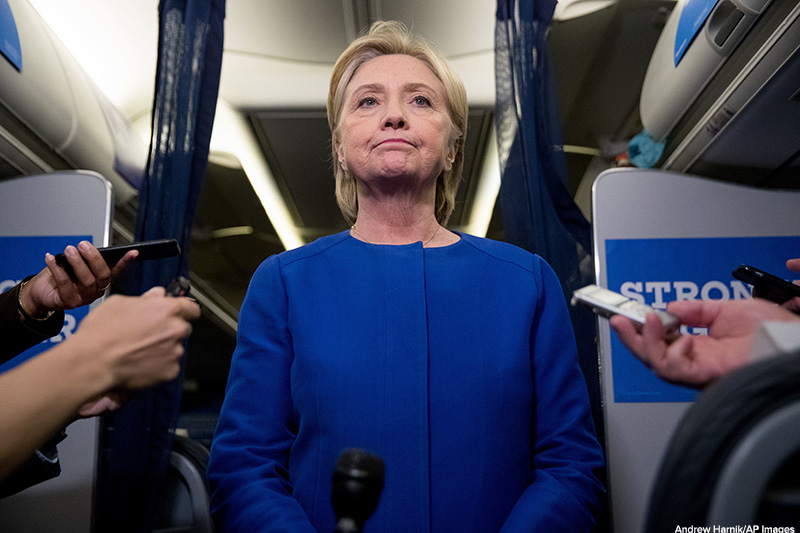
Credit: Andrew Harnik/AP Images.
Candidate Hillary Clinton pauses while she gives remarks on the explosion in Manhattan's Chelsea neighborhood onboard her campaign plane.
Tightening Polls Numbers
The resolution of the 2016 presidential election is (believe it or not) coming closer to the end. As October approaches, Election Day is less than two months away. And while you may think that the summer party conventions are far in the past, they happened less than two months ago as well.
But . . . the battle between Hillary Clinton and Donald Trump continues each and every day. Professional poll watchers and opinion makers are judging the likelihood of either candidate winning on a weekly–sometimes daily–basis. Let’s take a look at what some of the latest polling numbers show.
A Tightening Timeline
There are many different sets of poll numbers from professional organizations, media companies, and statisticians. So, you won’t find anyone who has the same numbers as anyone else. And how you interpret those numbers will also generate a lot of disagreement. But there are some things that can definitely be agreed upon.
Following the summer party conventions, Hillary Clinton has a dominant lead in the polls. This was attributed at the time to a few things, but the most significant factor was the perception that the Republican National Convention felt unorganized and Trump’s message was too negative. The Democratic Party Convention, on the other hand, had a positive theme and people were attracted to its optimism. As a result, Hillary Clinton enjoyed a double-digits lead over Trump at the start of August and Trump’s chance of winning the election was calculated by some to be less than 30 percent possible.
One poll interpretation suggests that previously undecided voters are beginning to move toward Donald Trump, helping to cut into Hillary’s summertime lead. This may be most dramatically visible in the battleground swing states that could flip for the Republican or the Democrat by November but are much too close to call yet. These key states include North Carolina, Ohio, Florida, and Nevada. According to some poll data interpretation–and only at this moment in the race–Clinton can just barely win the necessary 270 votes in the Electoral College to claim the White House without winning any of those states.
But that is all based on how much you believe the numbers and the statistics. What is certain right now is that the election is far from over and a great deal can still happen between now and November 8. (Heck, the candidates haven’t even held their first face-to-face debate yet!) So, it is definitely too soon to be supremely confident of anything.
Related Links:
There are many polls available with lots of data, at the national level and state-by-state polls as well. Here are a few suggested sources to consider. Take a look and then start building your own conclusions on the evidence you see in the data.
What Do You Think? Do you think that the election has made a definite shift towards one candidate or another? Or, no matter which candidate you favor, do you think there is still time to right whatever may be wrong? And how much of this data reflects the presence of Libertarian Gary Johnson or Green Party candidate Jill Stein? Does including their poll numbers affect what you believe the overall outcome to be? Explain your reasoning in a multi-paragraph essay.
David Martin



